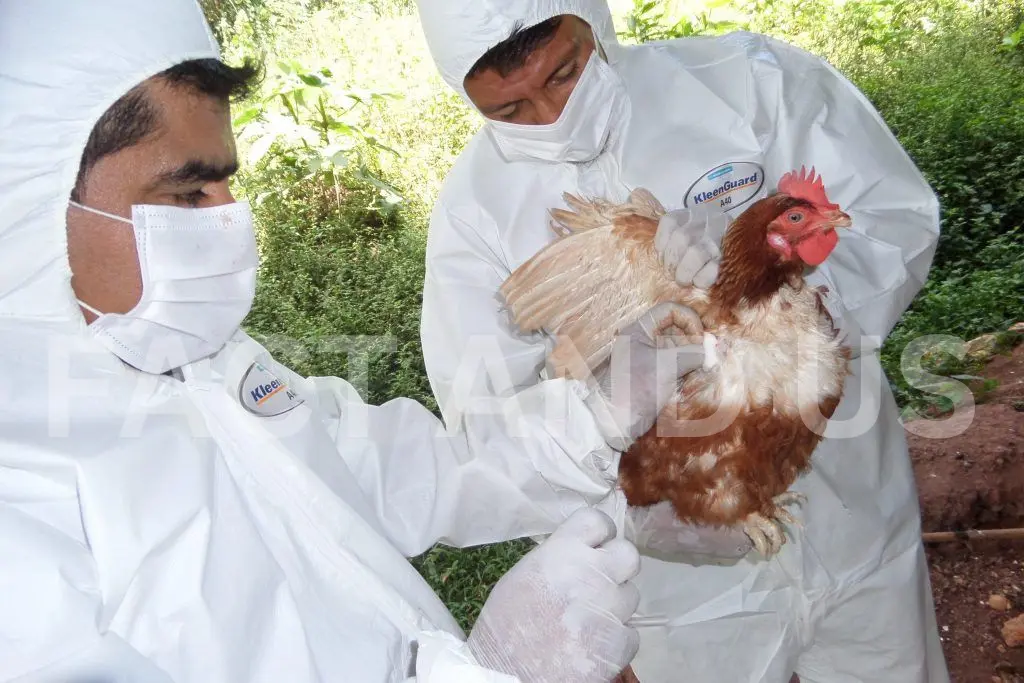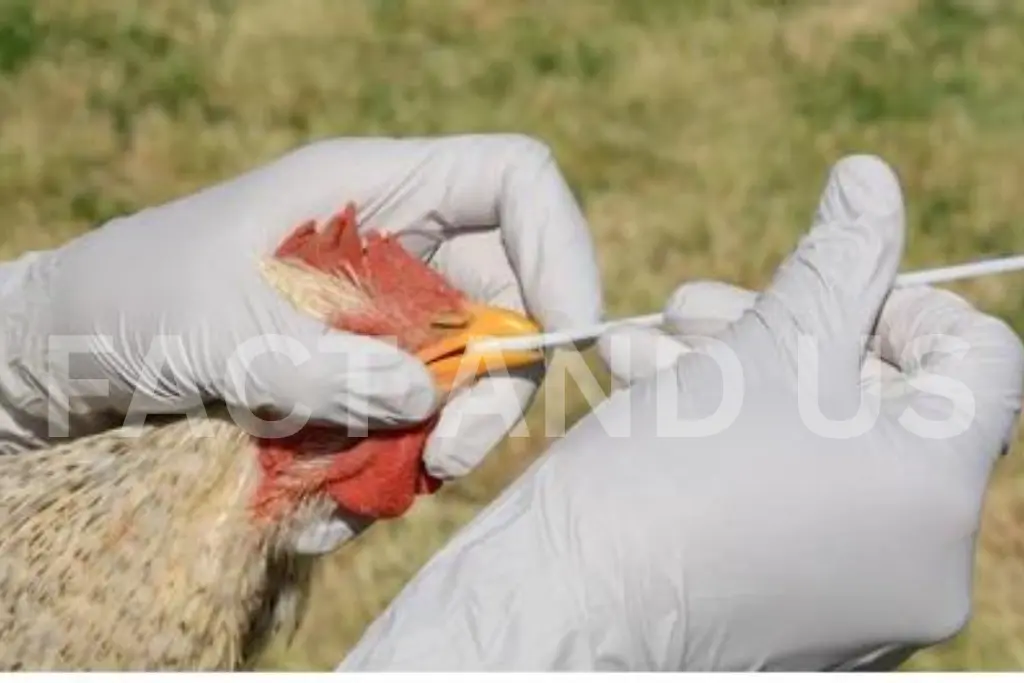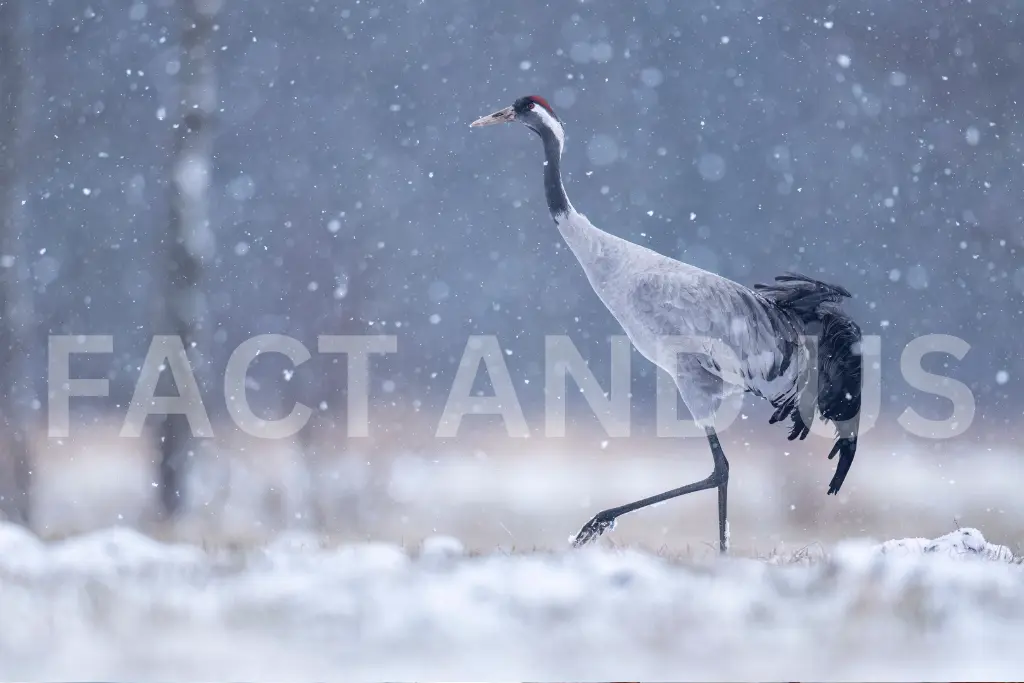Contents
- 1 Key facts
- 2 Overview
- 3 What is avian influenza?
- 4 Pandemic potential
- 5 Signs and symptoms in humans
- 6 Epidemiology of human infections
- 7 Diagnosis
- 8 Treatment
- 9 Prevention
- 10 Impact on animal health, including wild birds
- 11 Public health risk
- 12 What role do wild birds play in the spread of avian influenza?
- 13 WHO response
Key facts
Humans can be infected with avian, swine and other influenza viruses.

Direct contact with infected animals (through handling, culling, slaughtering or processing) or indirect contact (through environments contaminated with bodily fluids from infected animals) represent a risk for human infection.
Exposure to animal influenza viruses can lead to infection and disease in humans – ranging from mild, flu-like symptoms or eye inflammation to severe, acute respiratory disease and/or death. Disease severity will depend upon the virus causing the infection and the characteristics of the infected individual.
Currently circulating zoonotic influenza viruses have not yet demonstrated sustained person-to-person transmission.
As influenza viruses have a natural reservoir in aquatic birds they are impossible to eradicate. Zoonotic influenza infections will continue to occur. To minimize public health risk, quality surveillance in both animal and human populations, thorough investigation of every human infection, and risk-based pandemic planning are essential.
Overview
With devastating consequences for the poultry industry, farmer’s livelihoods, international trade, and the health of wild birds, avian influenza, also known as ‘bird flu’, has captured the attention of the international community over the years.
Where outbreaks occur in domestic birds, it is often the policy to cull all poultry, whether infected or healthy, to contain the spread of avian influenza. This represents heavy economic losses for farmers and a long-lasting impact on their livelihoods.
Migratory wild birds especially waterfowl, are natural reservoir of avian influenza viruses and they play a role in the spread the viruses across large geographical areas and also becomes victims of the disease.
Avian influenza is also a major concern for public health. Whenever avian influenza viruses circulate in poultry, sporadic cases of avian influenza in humans are sometimes identified.
There are 4 types of influenza viruses, types A, B, C and D. Influenza A and B viruses circulate and cause seasonal epidemics of disease in humans although only type A viruses can cause global pandemics based on current knowledge and understanding. Influenza A viruses are established in many animal species. The emergence of an influenza A virus, with the ability to infect people and sustain human-to-human transmission, could cause an influenza pandemic.

Influenza type A viruses are classified into subtypes according to the combinations of the proteins on the surface of the virus. When animal influenza viruses infect their host species, they are named according to the host – as avian influenza viruses, swine influenza viruses, equine influenza viruses, canine influenza viruses, etc. These animal influenza viruses are distinct from human influenza viruses and do not easily transmit to and among humans.
Wild aquatic birds are the primary natural reservoir for most subtypes of influenza A viruses. Avian influenza outbreaks in poultry can have immediate and severe consequences for the agricultural sector.
What is avian influenza?
Avian influenza is a highly contagious viral disease that affects both domestic and wild birds. Avian influenza viruses have also been isolated, although less frequently, from mammalian species, including humans. This complex disease is caused by viruses divided into multiple subtypes (i.e. H5N1, H5N3, H5N8 etc.) whose genetic characteristics rapidly evolve. The disease occurs worldwide but different subtypes are more prevalent in certain regions than others.

The many strains of avian influenza viruses can generally be classified into two categories according to the severity of the disease in poultry:
low pathogenicity avian influenza (LPAI) that typically causes little or no clinical signs;
high pathogenicity avian influenza (HPAI) that can cause severe clinical signs and possible high mortality rates.
Pandemic potential
There will be pandemics in future, but when, where and how they spread is difficult to predict. They can have significant health, economic and social consequences. An influenza pandemic will occur when an influenza virus emerges with the ability to cause sustained human-to-human transmission, and the human population has little to no immunity against the virus. With the growth of global travel, a pandemic can spread rapidly.
Whether currently circulating avian, swine and other influenza viruses will result in a future pandemic is unknown. However, the diversity of zoonotic influenza viruses that have caused human infections necessitates strengthened surveillance in both animal and human populations, thorough investigation of every zoonotic infection and pandemic preparedness planning.
Signs and symptoms in humans
Exposure to avian influenza viruses can lead to infection and disease in humans, ranging from mild, flu-like symptoms or eye inflammation to severe, acute respiratory disease and/or death. Disease severity will depend upon the virus causing the infection and the characteristics of the infected individual. Rarely, gastrointestinal and neurological symptoms have been reported. The case fatality rate for A(H5) and A(H7N9) subtype virus infections among humans is higher than that of seasonal influenza infections.
Epidemiology of human infections
Human infections with avian and other zoonotic influenza viruses, though rare, have been reported sporadically. Direct or indirect contact with infected animals represent a risk for human infection. Current zoonotic influenza viruses have not demonstrated sustained person-to-person transmission.
For avian influenza viruses, the primary risk factor for human infection appears to be exposure to infected live or dead poultry or contaminated environments, such as live bird markets. Slaughtering, defeathering, handling carcasses of infected poultry, and preparing poultry for consumption, especially in household settings, are also likely to be risk factors. There is no evidence to suggest that A(H5), A(H7N9) or other avian influenza viruses can be transmitted to humans through properly prepared and cooked poultry or eggs. A few influenza A(H5N1) human cases have been linked to consumption of dishes made with raw contaminated poultry blood.

In 1997, human infections with A(H5N1) viruses were reported during an outbreak in poultry in Hong Kong SAR, China. Since 2003, this virus has spread in bird populations from Asia to Europe and Africa, and to the Americas in 2021, and has become endemic in poultry populations in many countries. Outbreaks have resulted in millions of poultry infections, several hundred human cases, and many human deaths. Human cases have been reported mostly from countries in Asia, but also from countries in Africa, the Americas and Europe.
Diagnosis
Laboratory tests are required to diagnose human infection and testing should be done at a lab capable of safely processing and confirming zoonotic infections.
The collection of appropriate specimens from suspected human cases for virus identification and the rapid and precise characterization of the virus and/or its isolate is done at specialized reference laboratories. This is essential for proper response measures.
Treatment
If a person is suspected of having zoonotic influenza, the health authorities should be notified and appropriate clinical case management provided, including testing, triage, clinical assessment for disease severity classification, assessment of risk factors for severe disease, and isolation and treatment (for example, with antivirals and supportive care). Patients with influenza should be managed properly to prevent severe illness and death.
Prevention
Influenza viruses are impossible to eradicate and zoonotic infections will continue to occur. To minimize public health risk, quality surveillance in both animal and human populations, thorough investigation of every human infection and risk-based pandemic planning are essential. Public health and animal health authorities should work together and share information during investigations of human cases of zoonotic influenza.Everyone should perform hand hygiene, preferably washing their hands either with soap and running water (especially if there is visible soiling of hands) or using alcohol hand rubs, and in all cases as frequently, thoroughly and often as possible – but especially before and after contact with animals and their environments.

Everyone should practice good food safety habits: separating raw meat from cooked or ready-to-eat foods, keeping clean and washing hands, cooking food thoroughly, and handling and storing meat properly.
Travelers to countries and people living in countries with known outbreaks of avian influenza should, if possible, avoid poultry farms, contact with animals in live poultry markets, entering areas where poultry may be slaughtered, and contact with any surfaces that appear to be contaminated with faeces from poultry or other animals. Travelers returning from affected regions should report to local health services if respiratory symptoms suspecting zoonotic influenza virus infection.
Impact on animal health, including wild birds
With severe mortality rates, avian influenza can heavily impact the health of both poultry and wild birds. Often considered mainly as vectors of the disease, wild birds, including endangered species, are also victims. The consequences of avian influenza on wildlife could potentially lead to a devastating effect on the biodiversity of our ecosystems.
Public health risk
The transmission of avian influenza from birds to humans is usually sporadic and happens in a specific context. People who are in close and repeated contact with infected birds or heavily contaminated environments are at risk for acquiring avian influenza.
What role do wild birds play in the spread of avian influenza?
Wild birds mostly, wild aquatic birds can be the reservoir for LPAI viruses, and such infections are not associated with disease or mortality in their hosts. Over long periods of time, some of these LPAI viruses have moved into domestic birds (notably galliform poultry) through direct or indirect exposure followed by adaptation and circulation. Some of those viruses have mutated to become HPAI causing severe losses.
Historically, HPAI viruses have not been transferred back into wild aquatic birds, and wild aquatic birds have not had significant involvement in the spread of HPAI to poultry or other domestic birds. In recent years, the epidemiology of HPAI virus has changed, being endemic in domestic birds in a number of countries causing major outbreaks among domestic but also wild birds worldwide.
WHO response
WHO continuously monitors avian and other zoonotic influenza viruses closely through its Global Influenza Surveillance and Response System (GISRS). WHO, in collaboration with the World Organisation for Animal Health (WOAH) and the Food and Agriculture Organization of the United Nations (FAO), conducts surveillance at the human-animal interface, assesses the associated risks and coordinates response to zoonotic influenza outbreaks and other threats to public health.
Twice a year, WHO consults with experts from WHO Collaborating Centres, Essential Regulatory Laboratories and other partners to review data generated by GISRS and animal health partners on influenza viruses with pandemic potential and assesses the need for additional candidate vaccine viruses for pandemic preparedness purposes.
Stay connected with Fact and US for more such news.
